I don’t know if anyone has interest in a valley repair on a slate roof with two
different roof pitches-but I’ll put it up anyway.
1892 existing valley where bay dormer meets main roof
1893 1894 worn thru copper from erosion corrosion
1899 back side of old valley showing worn thru spot
1896 slate being removed and saved for relaying
1897 bracket holding salvage
1898 one side of valley cut away wooden bracket set in to kneel on
1901 Dried in at lunch time showing the set up for access
1904 Valley sheet in place
1905 both sheets installed
1908 slate almost relaid
This valley repair is different than most since it has a standing seam to prevent water from the main roof running under the flatter dormer roof. Only the main roof side was worn thru so I only replaced that one side.
The water from the hipped dormer is way less than the flow from the body of the roof so it will still have many years left on it.
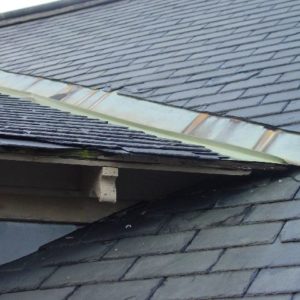
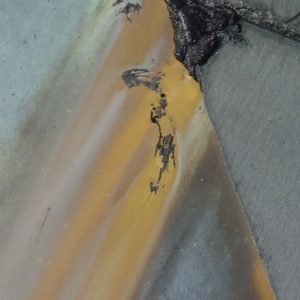
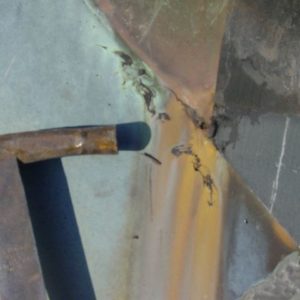
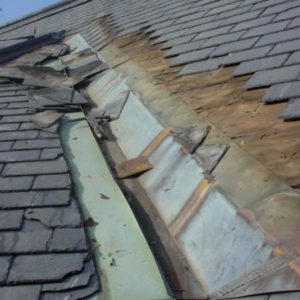
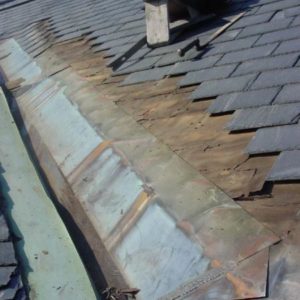
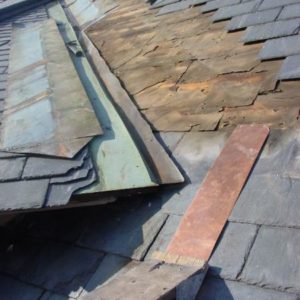
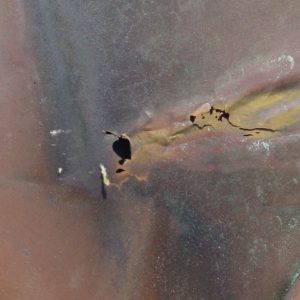
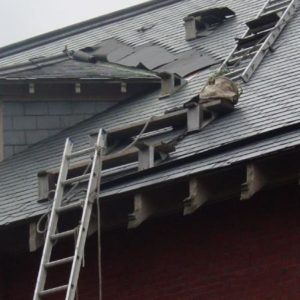
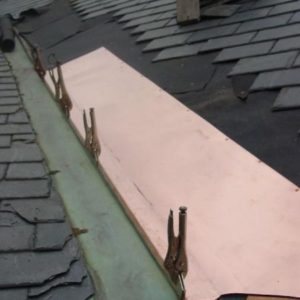
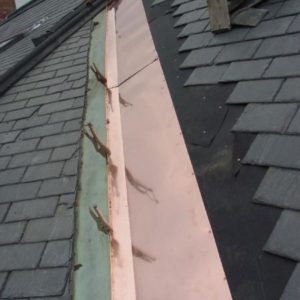
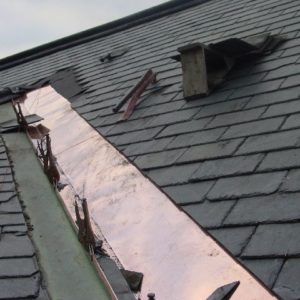
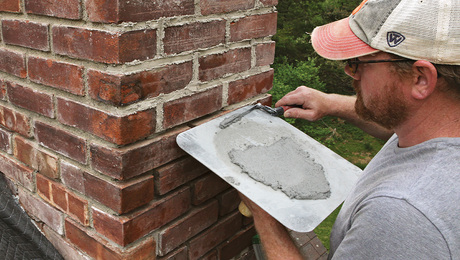
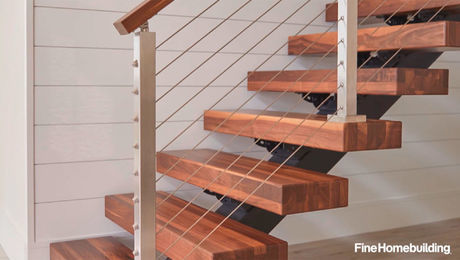
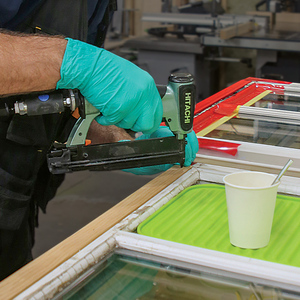
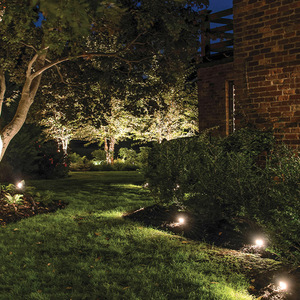















Replies
Yes, that is interesting. Is the new copper 16 oz? It kinda looks like it might be from the way it bends. I also notice that you nail it down directly rather than using cleats for expansion.
-- J.S.
John,
It's 20 oz. copper that I use for these types of valleys.
In my area of Maine there are not many instances where a cleated edge is used. Look at the old valley being taken out- it is installed like the new. It's failure was due to water wearing away the copper over a lot of years,not a lack of expansion causing the wear.
Walter
Very cool.
Do you work exclusively in slate. Do you keep busy full time? Mostly repairs or do you apply slate to new buildings as well?
If it wasn’t for the Bank Payments,
Interest, Taxes, Wages, and Fuel Costs,
I wouldn’t have to charge you!!
In my area of Maine there are numerous slate roofed houses and Public Buildings that have had their roofs on from 1850's-1930's. Slate became popular during the early Italianate period until cheaper products came along .
A large percentage of the work consists of maintaining those homes and buildings that need work. Chimney flashings,valleys,skylights,built in gutters are all items that need work on many structures here.
Some of the best slate ever quarried came from 80 miles North of here Monson black,but they no longer cut slate shingles there.
There are some new projects that come along,but the bulk of my work is older buildings. There is never a shortage of work to do -just the co-operation of Mother Nature to allow you the days to do it.
Walter
I am curious as to how you refasten shingles under the existing ones?
If you look in this picture you'll see a copper slate hook between two slates. The butt of the next slate will rest on the hook and I'll nail a 1.5" copper nail in the left side.I'll continue up to the top like this until I just hook the last slate- it's neighbors will hold it from moving side to side. Walter
thanks for showing that Walter,-- i don't think I have ever seen anything like that here.
Is that valley 2 pieces with a long seam down the center----- you are unlocking the right hand side and only replacing the right hand side????
my apologies if I am mis-reading the picture---- just never seen a valley flashing with a seam in the center !
thanks again for showing that,
Stephen
As I interpret the pictures, it was originally a one-piece "W" valley. The main roof has a lot more area and steeper pitch than the dormer side, so it corroded through first. The seam was created as part of the repair. He cut away the bad side only, and crimped a standing seam to the top of the "W". In picture 1898, it looks like he cut out the bad part only, a couple inches from the center.
That way he avoids fixing the side that ain't broke yet. If the dormer side lasts about twice as long as the main roof side, that's the best way to go. I see no reason why a standing seam shouldn't work fine until the whole valley needs replacement again.
-- J.S.
Edited 11/7/2006 1:24 pm ET by JohnSprung
John, You're almost 100 % correct in your analysis.
The only difference is that the fold was always tight and vertical like a standing seam,but all one piece of copper-not a "w" shape like is often seen.
All the rest of your comments were right on the money-why fix what aint broke!
Walter
> -why fix what aint broke!
Yup, especially with a brittle material like slate or tile. Any time you have to work on it, you risk breaking some, and then you have to try to find replacements that match, or put them where they won't show too much.
When I took off my tile, I saved as much as I could for my architect neighbor. He was glad to get matching equally weathered stuff for remodeling his place.
-- J.S.
John,
You're right about breakage on hard roof materials-some inevitably will happen.
I'm fortunate here in Maine to have vast quantities of salvage slate to use from homes being torn down or re-roofed,so if I break a few I have plenty on hand to use.
I don't have much tile on hand so I'd be up the creek there if I broke too many, Walter
I was wondering the same thing. The valley looks awfully wide to my eye also.
"Let's go to Memphis in the meantime, baby" - John Hiatt.
http://grantlogan.net/
Grant,
Look at my response to Stephen. It's not that common a situation,but a fun one to do.
Walter
..........but a fun one to do. You pretty much have a ball every day, don't you?
"Let's go to Memphis in the meantime, baby" - John Hiatt.
http://grantlogan.net/
Grant,
I'm a lucky guy. I get to work outside with little looking over my shoulder by customers on some of the nicest old stock of buildings in our area.
In addition to that I get paid well,get good exercise and priceless views!
You're absolutely right-I do have a ball.
Stephen,
The valley was all one piece of 16 oz. copper-bent at the change of pitch then 3" to the left a 1" fold acting as a standing seam and the balance of the sheet extending over under the dormer slates at a much lesser roof pitch.
Erosion corrosion had worn out some holes on the steep roof side so I was hired to repair it. I just cut down the bend at the pitch change to eliminate the excess copper-fabricated new 20 oz. valleys to fit over the standing seam,extending out the 3" to the pitch change ,and bent to continue up the main roof.
I was able to strip a 3' sheet into two 18" pieces to make the two valley sheets.I clamped the new and old together then rivetted the seam up high every 2'.
Since the only problem was with the steep side I choose to do it this way. I did the other side of this roof in the same manner 4 years ago and it's worked fine.
I use the old copper I salvage for the metal to nail onto my wooden brackets that I use. I could have left the old valley in place,but being a frugal Yankee-thats a lot of bracket stock to gain.
Walter
theslateman -- I have a 53 yr old slate roof and the valleys seem to be going -- getting some of the same wear through spots yous are showing. Up until now, I have not replaced the valleys --have patched here and there -- how long does it take to pull off the slate either side of a valley, replace the valley, and put the slate back -- say a 16 foot valley -- I really want to do this myself and have studied the slate bible and think of it a lot of manual labor that is right up my alley -- Tks Dudley
Dudley,
Send me your e-mail address and I'll send you a Shutterfly album showing all the required steps to doing a perfect valley replacement on an equal pitch valley.
This one was unusual in that it had two different roof pitches.
I've done lots of valleys so my time would most likely be less than your first attempt,but very satisfying for you to do yourself.
theslateman -- I have a spam filter on that won't let anybody in that is not in our address book -- however, if you send the messge to [email protected] and then respond to the guidiance on getting in - I can add you to our book -- tks for the offer to help with your guidiance -- Dudley
Dudley,
I'll post it here as a link so we won't have to worry about filters. I'll put it up in a little while after perusing a few more threads here.
Walter
Dudley,
Here's the link to the valley album.
Walter http://share.shutterfly.com/action/welcome?sid=8cbsmrhqzcI¬ag=1
theslateman -- tks so much very helpful -- been out of the loop for a while apologized for not getting back sooner -- D
I hope you were able to use some of those techniques.
No need for apologies-lots of times here it's open ended .
Walter
I am new to the slating with a just a few repairs on my garage under my belt and am going to tackle my 3 story roof for repairs (cracked Vt. Fading Sea Green slates and worn valleys) in the spring. I am curious however on your use of ICW on the valley repair, I thought that was a big no-no according to the SR Bible?I am not second guessing your work, It looks great but would value different opinions for when I do mine.I love slate and copper. You have a great job. I envy you.
Don't believe everything you read in the SRB.
He writes books-I keep water out of peoples houses.
If you're not in a heavy snow climate than you could omit the IWS and just use felt or just use felt no matter what and hope for the best.
Great pics. I've got a lot of interest in slate roofing but no experience with either copper or slate. I've done several shake (wood) roofs and slate just appeals to me. I like the look of slate on steep, Greater than 8/12, roofs but can't imagine the difficulty of getting up on them and working on them all day long. Need to be extra careful or your career is ending very soon.
Where do you buy your tools, slate ripper in particular?
Pick up a book called "The Slate Roof Bible." Excellent pics and info about the history of slate roofing, slating techniques, repairs, tools, etc.
http://www.amazon.com/Slate-Roof-Bible-Understanding-Installing/dp/0964425815
Billy
I've bought lots of them in flea markets yard sales,but your best bet might be on E Bay if you're serious about owning a nice old tool with great steel.